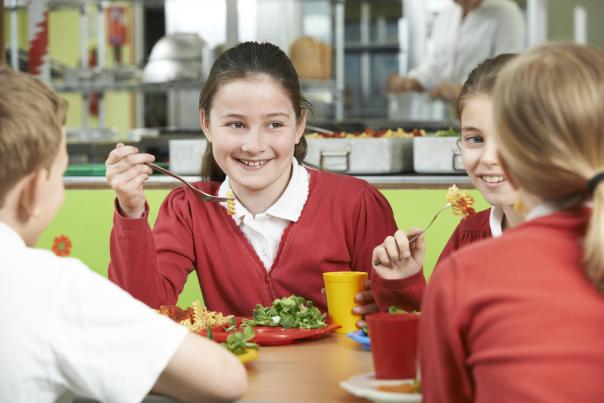
The challenge of encouraging students to make healthier food choices in school dining rooms is one that many school meal providers face. While schools have made strides in offering more nutritious options, persuading students to choose these over less healthy alternatives remains a hurdle.
However, by implementing strategic approaches to menu design, presentation, and education, school meals providers can significantly influence students’ eating habits, paving the way for a healthier generation.
Creative menu design and presentation
One of the most effective ways to promote healthier options is by making them appealing through creative menu design. This involves not only the selection of nutritious foods, but also the way they are presented. For example, giving dishes attractive, fun names can make them more appealing to students.
Studies have shown that children are more likely, for example, to choose ‘X-ray Vision Carrots’ over plain ‘carrots’ or ‘Superhero Veggie Wraps’ rather than just ‘vegetable wraps’. This playful approach taps into students’ imaginations and can make the idea of eating healthy foods more exciting.
Additionally, the way food is displayed plays a crucial role. Healthier options should be placed at the front of the line or at eye level, making them the first choice students encounter. Bright, colourful displays and the strategic placement of fruits, vegetables, and whole grains can entice youngsters to select these options over less nutritious choices.
Get pupil feedback
Engaging students in the meal selection process can also increase the likelihood that they will choose healthier options. By involving them in taste tests or allowing them to vote on new menu items, schools can gain valuable insight into what healthy dishes are most appealing. When they feel they have a say in what they eat, children are more likely to make positive choices.
Educational initiatives
Talk to the school leadership team about teaching children about nutrition and the benefits of a balanced diet. This can be classroom lessons, workshops, or even cooking classes that allow them to prepare healthy meals themselves. By understanding the ‘why’ behind healthy eating, students are more likely to make informed choices.
And integrating nutrition education into the curriculum ensures that the message is consistent and reinforced across different subjects. For example, science classes can explore the biological impact of nutrients on the body, while maths lessons can include calculating calories or understanding food labels.
Incentivise healthy choices
Incentives can be a powerful motivator for children. Schools can create reward systems where they earn points or tokens for choosing healthier options, which can be redeemed for non-food rewards like extra school supplies. Such ideas not only make healthy eating more attractive but introduce an element of fun and competition.
Partnerships with parents and the community
Finally, collaboration with parents and the wider community is essential for promoting healthier eating habits. Schools can host workshops for parents, providing them with resources and tips for encouraging healthy eating at home. Additionally, partnerships with local farms or food producers can help schools provide fresh, locally-sourced ingredients to further enhance meal quality and appeal.